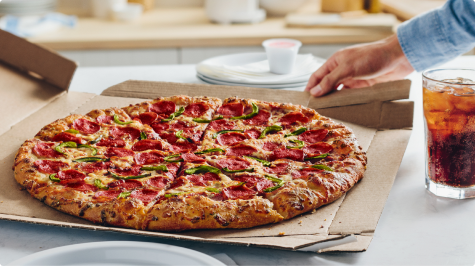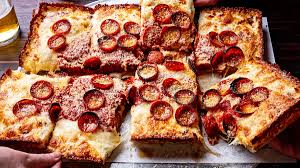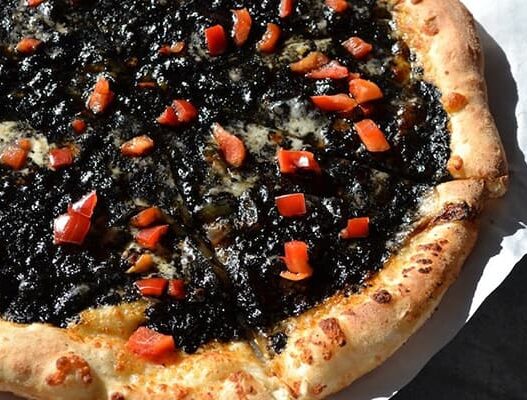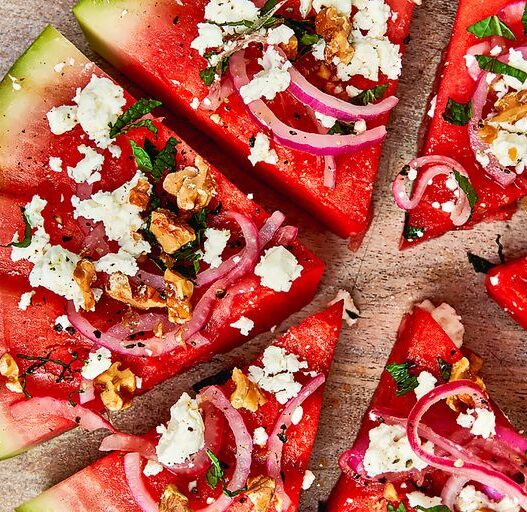Detroit-style pizza is no longer the Motor City’s best-kept secret—it’s become a nationwide (and now worldwide) sensation. What started as a humble corner tavern specialty has exploded into one of the biggest pizza trends of 2025, reshaping how home bakers, pizza shops, and suppliers think about dough, pans, and toppings.
So why is everyone suddenly talking about this caramelized-crust, cheesy-edged masterpiece? And what does it mean for pizza lovers, restaurant owners, and the industry at large? Let’s break down the irresistible rise of Detroit-style pizza.
The Origins: How Detroit Created a Pizza Icon
Detroit-style pizza was first baked at Buddy’s Rendezvous in 1946. Legend says the cooks used industrial blue steel pans (originally made for auto parts) to bake thick, airy dough topped with Wisconsin brick cheese. The cheese would melt, run down the sides, and create that signature crispy caramelized edge. Sauce was spooned on top, not underneath, leading to its nickname: “red top pizza.”
For decades, it stayed local. Detroiters knew it, loved it, and guarded it. Then, in the last decade, national media and chains like Jet’s Pizza and Domino’s began championing the style. The result? A pizza renaissance that has catapulted Detroit pies into the mainstream.
Why Detroit Pizza Became a Global Trend in 2025
Several forces collided to make Detroit-style pizza the dish of the moment:
- The comfort food boom. During uncertain times, people craved indulgence. Detroit pizza—fluffy yet crunchy, cheesy yet saucy—hits the emotional sweet spot.
- Instagram appeal. The square slices, gooey cheese pulls, and dramatic sauce stripes are photogenic. Social media made Detroit pizza go viral.
- Home pizza oven revolution. With more people buying home ovens like the Ooni Koda, Detroit-style pans and dough recipes surged in popularity.
- Artisanal ingredient movement. Foodies are experimenting with brick cheese, heritage flours, and specialty pepperoni. (You can grab artisanal pizza ingredients at Amazon).
- Big-name endorsements. Chefs like Chris Bianco and chains like Pizza Hut added Detroit-style pies to their menus, making it mainstream.
The Perfect Detroit Slice at Home
Want to join the trend without flying to Michigan? Making Detroit-style pizza at home is easier than ever. You’ll need:
- A Detroit-style pizza pan (usually 10×14 inches) – find it here.
- A high-hydration dough recipe (think 70% hydration for that light, airy texture). See our full guide at The Pizza Weekly dough recipe.
- Brick cheese (or a blend of mozzarella and cheddar if you can’t find it).
- Cup-and-char pepperoni for the classic curled, crispy effect.
- A rich, tangy tomato sauce—ladled on top after baking.
Pro tip: let your dough ferment overnight in the fridge for complex flavor. Then press it into the pan, load it with cheese, and bake at 500°F for 12–15 minutes. The result is as close to Detroit as your kitchen gets.
The Business Impact: Pizza Shops Are Cashing In
For pizzerias, Detroit-style pies have become a golden ticket. Adding Detroit-style pizza to the menu often boosts sales by 20–30%, according to restaurant consultants. Customers are willing to pay premium prices for a specialty pie that feels both nostalgic and new.
To succeed, shop owners are investing in:
- Commercial pizza equipment like dough presses and mixers.
- Pizza POS systems that streamline takeout and delivery. (See our guide to POS systems).
- Marketing strategies built around Detroit pizza—Instagram reels, TikTok challenges, and local press coverage.
It’s not just a fad. Analysts suggest Detroit-style pizza is moving from “trend” to menu staple in the same way Neapolitan and New York slices became fixtures.
Sustainable and Creative Twists in 2025
As the trend matures, chefs are experimenting. In 2025, we’re seeing:
- Plant-based Detroit pizzas with vegan mozzarella and Beyond Pepperoni.
- Sustainable sourcing, using local farms for cheese and flour.
- Fusion pizzas, like kimchi Detroit pies in Los Angeles or butter chicken Detroit slices in London.
This creativity is ensuring Detroit pizza stays fresh, relevant, and innovative rather than a passing novelty.
The Future of Detroit-Style Pizza
Detroit-style isn’t just “having a moment.” It’s becoming a pillar of modern pizza culture. Food forecasters predict:
- More home bakers embracing specialty pans and ovens.
- National chains expanding their Detroit lines.
- Global pizzerias (from Dubai to Tokyo) adding Detroit pies to menus.
The Detroit pizza trend 2025 proves that innovation in pizza doesn’t always mean reinventing the wheel. Sometimes, it’s about rediscovering a local classic and sharing it with the world.
Frequently Asked Questions About Detroit-Style Pizza
1. What makes Detroit-style pizza different from other styles?
Detroit pizza is baked in a rectangular steel pan, topped edge-to-edge with cheese, and finished with sauce on top. The caramelized cheese crust is its signature feature.
2. What kind of pan should I use for Detroit pizza?
A 10×14 blue steel pan is traditional, but modern nonstick Detroit pans are widely available. Check options here.
3. Can I make Detroit pizza without brick cheese?
Yes. A mix of mozzarella and white cheddar works well if brick cheese isn’t available.
4. How long does Detroit pizza dough need to rise?
At least 8 hours in the fridge for the best flavor and texture.
5. Is Detroit-style pizza just a trend?
It started as a trend, but in 2025 it’s proving to be a lasting part of the pizza industry worldwide.
Where to Explore More Pizza Stories
If this Detroit deep-dive sparked your curiosity, check out more on The Pizza Weekly:
- Best Home Pizza Ovens of 2025
- Pizza Dough Recipe: How to Master It
- Pizza POS Systems for Shop Owners
Affiliate Disclaimer
This article contains affiliate links, which means the Pizza Weekly Magazine may earn a commission if you make a purchase through them, at no extra cost to you. We only recommend products and services we genuinely believe in.





















